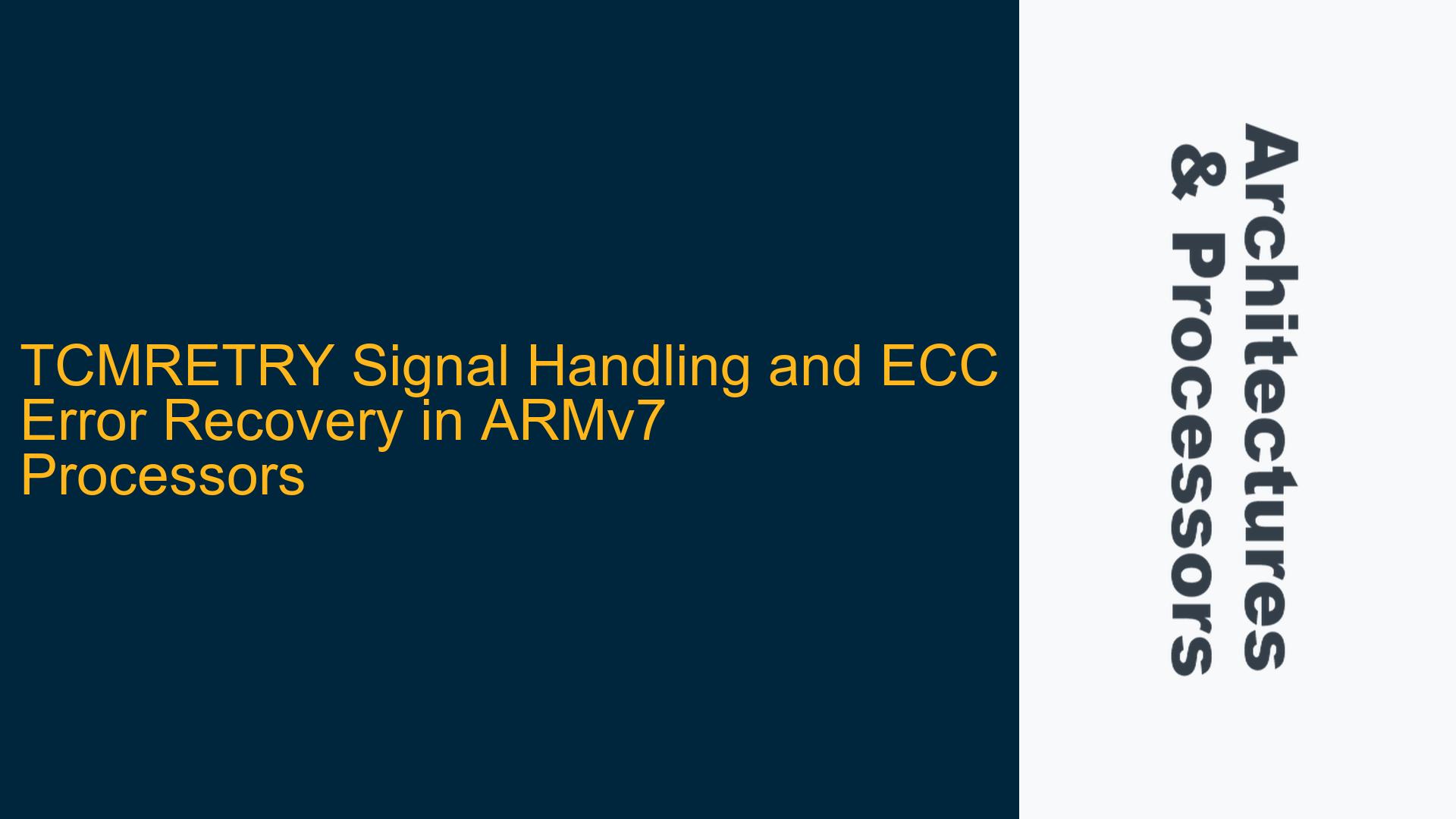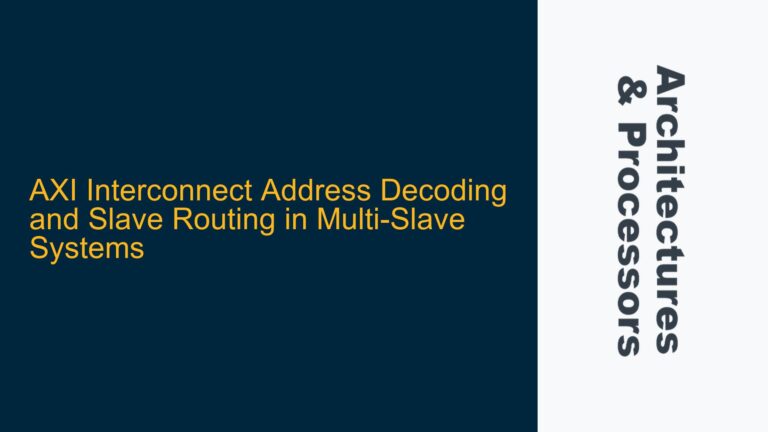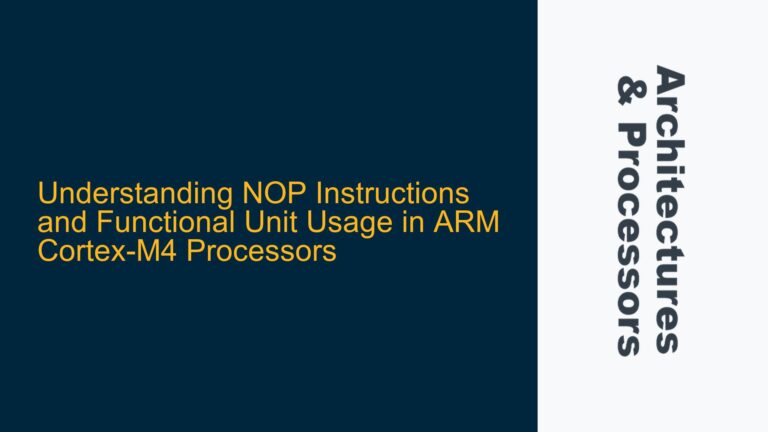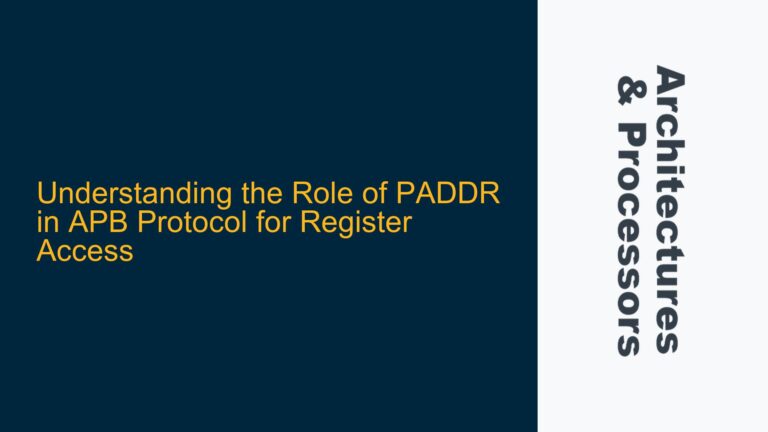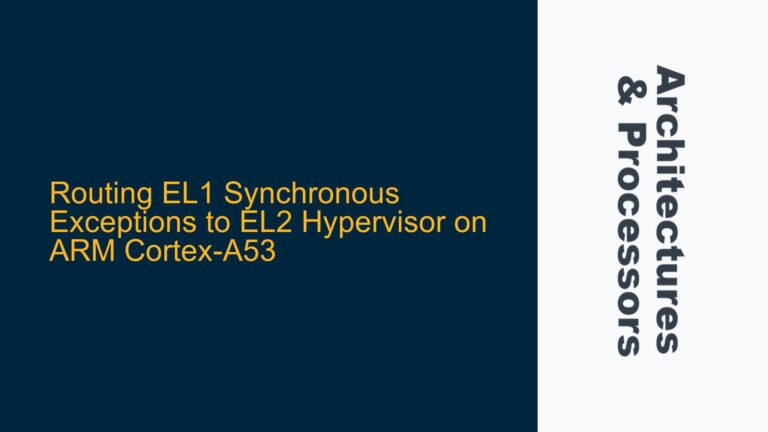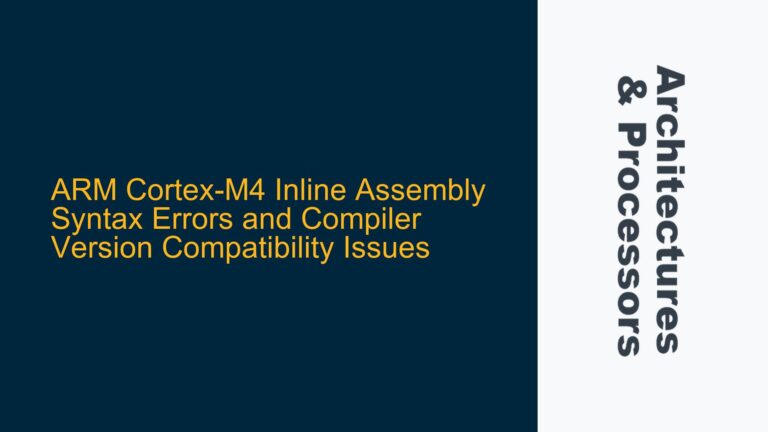TCMRETRY Signal and ECC Error Detection in ARMv7 TCMs
The TCMRETRY signal in ARMv7 processors is a critical component for handling Error Correction Code (ECC) errors in Tightly Coupled Memories (TCMs). TCMs are high-speed memory blocks closely integrated with the processor core, providing low-latency access for critical data and instructions. When ECC is implemented in TCMs, it allows for the detection and correction of single-bit errors and the detection of multi-bit errors. However, when an ECC error is detected during a read operation, the TCMRETRY signal is used to initiate a retry mechanism to ensure data integrity.
The TCMRETRY signal is typically asserted by the memory controller or ECC logic when an uncorrectable ECC error is detected during a read operation. This signal informs the processor core that the data returned from the TCM is invalid and that the read operation must be retried. The core’s response to the TCMRETRY signal is crucial for ensuring that the system can recover from transient errors without crashing or producing incorrect results.
In a typical scenario, when the processor core initiates a read operation from the TCM, the ECC logic checks the data for errors. If an error is detected, the ECC logic asserts the TCMRETRY signal, and the core must re-initiate the read operation. The core’s behavior in response to the TCMRETRY signal depends on the specific implementation and the state of the pipeline at the time the error is detected.
Core Response to TCMRETRY and AHBS Interface Behavior
When the ARMv7 core receives the TCMRETRY signal, it must handle the error in a way that ensures data integrity and system stability. The core’s response to the TCMRETRY signal involves several steps, including re-initiating the read operation, flushing the pipeline if necessary, and ensuring that the correct data is eventually returned to the requesting process.
The core’s response to the TCMRETRY signal can be broken down into the following sequence of events:
- Detection of ECC Error: The ECC logic detects an error in the data read from the TCM and asserts the TCMRETRY signal.
- Core Acknowledgment: The core acknowledges the TCMRETRY signal and halts further processing of the erroneous data.
- Re-initiation of Read Operation: The core re-initiates the read operation from the same address where the error was detected.
- Pipeline Flush: If the erroneous data has already entered the pipeline, the core may need to flush the pipeline to prevent incorrect instructions or data from being executed or used.
- Correct Data Return: The core waits for the correct data to be returned from the TCM before proceeding with further execution.
The behavior of the AHBS (Advanced High-performance Bus Slave) interface during this process is also critical. The AHBS interface is responsible for returning data to the core during read operations. When the TCMRETRY signal is asserted, the AHBS interface must ensure that the incorrect data is not returned to the core. Instead, the AHBS interface should wait for the correct data to be available after the read operation is retried.
In some implementations, the AHBS interface may return the incorrect data initially, but the core will ignore this data if the TCMRETRY signal is asserted. The core will then re-initiate the read operation, and the AHBS interface will return the correct data after the error has been corrected.
Implementing TCMRETRY Handling and ECC Error Recovery
Implementing the TCMRETRY handling and ECC error recovery mechanism in an ARMv7 processor requires careful consideration of the timing and coordination between the core, the TCM, and the ECC logic. The following steps outline the process for implementing this mechanism:
-
Enable TCMRETRY Functionality: Ensure that the TCMRETRY functionality is enabled in the processor core. This may involve setting specific bits in the core’s configuration registers.
-
Configure ECC Logic: Configure the ECC logic to detect and correct errors in the TCM. This includes setting up the ECC algorithm, enabling error detection, and configuring the ECC logic to assert the TCMRETRY signal when an error is detected.
-
Handle TCMRETRY Signal in Core: Implement the core’s response to the TCMRETRY signal. This involves re-initiating the read operation, flushing the pipeline if necessary, and ensuring that the correct data is returned to the requesting process.
-
Coordinate with AHBS Interface: Ensure that the AHBS interface correctly handles the TCMRETRY signal. The AHBS interface should not return incorrect data to the core when the TCMRETRY signal is asserted. Instead, it should wait for the correct data to be available after the read operation is retried.
-
Simulate and Test: Simulate the TCMRETRY handling and ECC error recovery mechanism to ensure that it works as expected. This includes testing the core’s response to the TCMRETRY signal, the behavior of the AHBS interface, and the overall system stability in the presence of ECC errors.
-
Optimize for Performance: Optimize the TCMRETRY handling and ECC error recovery mechanism for performance. This may involve minimizing the number of pipeline flushes, reducing the latency of the retry mechanism, and ensuring that the system can recover from errors quickly and efficiently.
Detailed Timing Diagram for TCMRETRY Handling
To fully understand the TCMRETRY handling and ECC error recovery mechanism, it is helpful to examine a detailed timing diagram. The following table outlines the key events and their timing in the TCMRETRY handling process:
| Time | Event | Description |
|---|---|---|
| T0 | Core Initiates Read | The core initiates a read operation from the TCM. |
| T1 | ECC Error Detected | The ECC logic detects an error in the data read from the TCM. |
| T2 | TCMRETRY Asserted | The ECC logic asserts the TCMRETRY signal to inform the core of the error. |
| T3 | Core Acknowledges TCMRETRY | The core acknowledges the TCMRETRY signal and halts further processing of the erroneous data. |
| T4 | Core Re-initiates Read | The core re-initiates the read operation from the same address. |
| T5 | Pipeline Flush | The core flushes the pipeline to prevent incorrect instructions or data from being executed or used. |
| T6 | Correct Data Returned | The correct data is returned from the TCM to the core. |
| T7 | Core Resumes Execution | The core resumes execution with the correct data. |
Example Code for TCMRETRY Initialization
The following example code demonstrates how to initialize the TCMRETRY functionality in an ARMv7 processor. This code is based on the Cortex-M7 implementation provided in the ARM documentation:
void enable_tcm_retry(void) {
// Enable TCMRETRY functionality
uint32_t tcm_ctrl_reg = read_tcm_ctrl_reg();
tcm_ctrl_reg |= TCM_CTRL_RETRY_ENABLE;
write_tcm_ctrl_reg(tcm_ctrl_reg);
// Configure ECC logic
uint32_t ecc_ctrl_reg = read_ecc_ctrl_reg();
ecc_ctrl_reg |= ECC_CTRL_ERROR_DETECTION_ENABLE;
ecc_ctrl_reg |= ECC_CTRL_RETRY_ON_ERROR;
write_ecc_ctrl_reg(ecc_ctrl_reg);
// Enable AHBS interface to handle TCMRETRY
uint32_t ahbs_ctrl_reg = read_ahbs_ctrl_reg();
ahbs_ctrl_reg |= AHBS_CTRL_RETRY_HANDLING_ENABLE;
write_ahbs_ctrl_reg(ahbs_ctrl_reg);
}
This code enables the TCMRETRY functionality, configures the ECC logic to detect and handle errors, and ensures that the AHBS interface correctly handles the TCMRETRY signal.
Conclusion
The TCMRETRY signal is a critical component for handling ECC errors in ARMv7 TCMs. Proper implementation of the TCMRETRY handling and ECC error recovery mechanism ensures data integrity and system stability in the presence of memory errors. By understanding the core’s response to the TCMRETRY signal, the behavior of the AHBS interface, and the overall timing of the error recovery process, developers can implement robust and reliable systems that can recover from transient errors without crashing or producing incorrect results.
